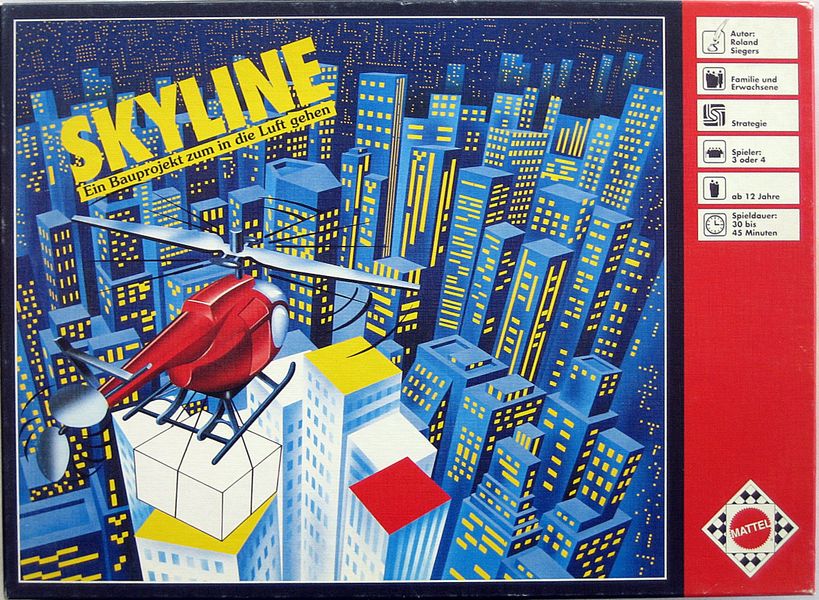Skyline (1988) Board Game
Skyline is an abstract strategy board game released in in 1988. Designed by Wagner, Ufer & Cie., the game involves city building and tile placement mechanics. With a playing time of around 45 minutes and suitable for players aged 12 and above, Skyline has gained popularity among board game enthusiasts for its strategic gameplay.
Game Components of Skyline
How To Setup Skyline
To set up Skyline, place the status board in the middle of the table and position the status marker on the first space. Group all the dice into three piles (Ground Floor, Upper Floor, and Penthouse) to the left of the status board, known as the construction yard. Place all the building tiles near the dice. Take three dice (one of each type) and place them to the right of the status board, forming the abandoned district. The player who has most recently visited a high-rise building starts the game. Distribute ground floor dice to players: the first player receives a high-rise ground floor, the second a mid-rise ground floor, and the third a low-rise ground floor. The fourth player does not receive any dice initially.
Gameplay Mechanics and Game Objective
Mechanics:
Objective:
Player Experience
Skyline offers a balanced mix of luck and strategy, making it enjoyable for both casual and strategic players. Each turn involves choosing dice, rolling them, and taking actions that can significantly impact your score. The game is relatively short and easy to learn, making it a great filler game for families or groups looking for a light yet engaging experience.
Pros
Cons
Personal Thoughts on Skyline
Skyline is ideal for families, casual gamers, and those looking for a quick, entertaining game session. It’s perfect for introducing children to dice-rolling games and teaching basic strategic thinking. However, players seeking complex strategies or longer game sessions might find Skyline a bit lacking. Overall, it’s a great addition to any game collection for its simplicity and fun factor.
We are supported by our audience. When you purchase through links on our site, we may earn an affiliate commission, at no extra cost for you. Learn more.

